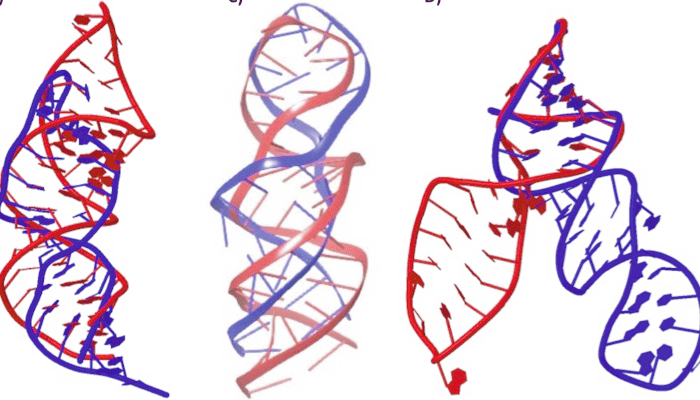
Conformational flexibility and structural dynamics of aptamers
MINIREVIEW
![]()
ISSN: 2514-3247
Aptamers (2023), Vol 7, 1-6
Published online: 19 September 2023
Full Text (Bennett ~1220kb) | (Supplementary Data ~862kb) | (PubMed Central Record HTML) | (PubMed) | (References)
Hayley-Ann Bennett1, Yifeng Li2,* and Hongbin Yan1,*
1Department of Chemistry and Centre for Biotechnology, Brock University, 1812 Sir Isaac Brock Way, St Catharines, ON L2S 3A1, Canada
2Department of Computer Science and Department of Biological Sciences, Brock University, Canada
*Correspondence to: Yifeng Li, Email: yli2@brocku.ca, or Hongbin Yan, Email: tyan@brocku.ca
Received: 03 April 2023 | Revised: 15 July 2023 | Accepted: 22 August 2023 | Published: 19 September 2023
© Copyright The Author(s). This is an open access article, published under the terms of the Creative Commons Attribution Non-Commercial License (http://creativecommons.org/licenses/by-nc/4.0). This license permits non-commercial use, distribution and reproduction of this article, provided the original work is appropriately acknowledged, with correct citation details.
ABSTRACT
This minireview summarizes two important features of aptamer structures: conformational flexibility in their free and bound states, and their structural dynamics that can be influenced by sample preparation and experimental conditions. Examination of aptamer structures in the literature supports the notion that aptamers are pre-disposed to adopting secondary and tertiary structures that can undergo conformational changes of different degrees upon binding to their ligand. While it is difficult to generalize the structural similarity between the free and bound state, as they vary from aptamer to aptamer, such knowledge can be useful for aptamer sequence design and optimization. On the other hand, aptamer sequences can adopt different secondary structures in their ligand-free state, which can be re-populated when thermally treated. This aspect of structural dynamics of aptamers should be considered in sample preparation to ensure experimental reproducibility involving aptamers.
KEYWORDS: Aptamer, conformational flexibility, adaptive recognition, secondary and tertiary structure, ligand
